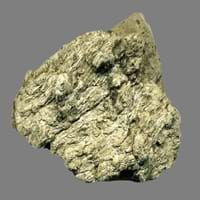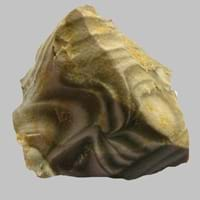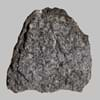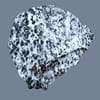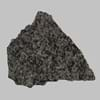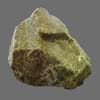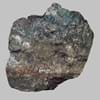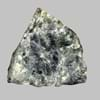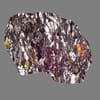Definition
Dacite is a volcanic igneous rock which is rintermediate in composition between andesite and rhyolite
Flint is a hard type of sedimentary rock that produces a small piece of burning material when hit by steel
Origin
Romania and Moldova, Europe
Unknown
Discoverer
Unknown
Unknown
Etymology
From Dacia, a province of the Roman Empire which lay between the Danube River and Carpathian Mountains where the rock was first described
From Old English flint - a type of rock mainly known for high hardness and for giving off sparks when struck
Class
Igneous Rocks
Sedimentary Rocks
Sub-Class
Durable Rock, Soft Rock
Durable Rock, Hard Rock
Group
Volcanic
Not Applicable
Other Categories
Fine Grained Rock, Medium Grained Rock, Opaque Rock
Fine Grained Rock, Opaque Rock
Texture
Aphanitic to Porphyritic
Banded, Rough
Color
Bluish - Grey, Brown, Grey, Light to Dark Grey
Black, Brown, Green, Grey, Red, White
Durability
Durable
Durable
Appearance
Vesicular
Glassy or Pearly
Interior Uses
Decorative Aggregates, Entryways, Interior Decoration
Decorative Aggregates, Homes, Interior Decoration
Exterior Uses
As Building Stone, Paving Stone, Garden Decoration
As Building Stone, As Facing Stone, Garden Decoration, Office Buildings, Paving Stone
Other Architectural Uses
Curbing
Curbing
Construction Industry
As Dimension Stone, Construction Aggregate, for Road Aggregate, Landscaping
Arrowheads, Cutting Tool, Spear Points
Medical Industry
Not Yet Used
Not Yet Used
Antiquity Uses
Artifacts
Artifacts
Commercial Uses
Commemorative Tablets, Creating Artwork
Creating Artwork, Gemstone, In fire-starting tools, Manufacture of tools, Metallurgical Flux, Jewelry, To ignite fire, Used in flintlock firearms
Types
Footwall Dacite, Hanging wall Dacite, Tuff and Biotite Dacite
Not Available
Features
Host Rock for Lead, Is one of the oldest rock
Clasts are smooth to touch, Easily splits into thin plates, Has High structural resistance against erosion and climate
Archaeological Significance
Monuments
Not Yet Used
Not Yet Used
Famous Monuments
Not Applicable
Not Applicable
Sculpture
Not Yet Used
Not Yet Used
Famous Sculptures
Not Applicable
Not Applicable
Pictographs
Used
Not Used
Petroglyphs
Used
Not Used
Figurines
Not Yet Used
Not Yet Used
Formation
Dacitic magma is formed by the subduction of young oceanic crust under a thick felsic continental plate. Further, the Oceanic crust is hydrothermally altered as quartz and sodium are added.
Flint is formed by the decomposition and compaction of various organisms such as sponges and diatoms under the water.
Mineral Content
Amphibole, Apatite, Biotite, Feldspar, Garnet, Hornblade, Magnetite, Plagioclase, Pyroxene, Quartz, Zircon
Silicon
Compound Content
Ca, Fe, Potassium Oxide, Mg, Potassium, Silicon Dioxide
Silicon Dioxide
Types of Metamorphism
Burial Metamorphism, Cataclastic Metamorphism
Not Applicable
Types of Weathering
Biological Weathering, Chemical Weathering, Mechanical Weathering
Not Applicable
Types of Erosion
Chemical Erosion
Chemical Erosion, Coastal Erosion, Water Erosion
Grain Size
Medium to Fine Coarse Grained
Very fine-grained
Fracture
Conchoidal
Conchoidal
Porosity
Less Porous
Highly Porous
Luster
Subvitreous to Dull
Vitreous
Compressive Strength
Not Available
Cleavage
Perfect
Non-Existent
Toughness
Not Available
1.5
Specific Gravity
2.86-2.87
2.5-2.8
Transparency
Translucent
Translucent to Opaque
Density
2.77-2.771 g/cm3
2.7-2.71 g/cm3
Resistance
Heat Resistant, Impact Resistant, Pressure Resistant, Wear Resistant
Heat Resistant, Impact Resistant, Pressure Resistant, Wear Resistant
Deposits in Eastern Continents
Asia
Not Yet Found
Azerbaijan, China, Russia
Africa
Not Yet Found
Not Yet Found
Europe
France, Greece, Romania, Scotland, Spain
Austria, Belgium, Cyprus, Denmark, France, Germany, Italy, Malta, Netherlands, Poland, Portugal, Romania, Spain, Sweden, Switzerland, Turkey, Ukraine, United Kingdom
Others
Not Yet Found
Not Yet Found
Deposits in Western Continents
South America
Argentina, Bolivia, Chile, Colombia, Ecuador, Peru, Venezuela
Bolivia
Deposits in Oceania Continent
Australia
New Zealand, South Australia, Western Australia
New Zealand, South Australia
All about Dacite and Flint Properties
Know all about Dacite and Flint properties here. All properties of rocks are important as they define the type of rock and its application. Dacite belongs to Igneous Rocks while Flint belongs to Sedimentary Rocks.Texture of Dacite is Aphanitic to Porphyritic whereas that of Flint is Banded, Rough. Dacite appears Vesicular and Flint appears Glassy or Pearly. The luster of Dacite is subvitreous to dull while that of Flint is vitreous. Dacite is available in bluish - grey, brown, grey, light to dark grey colors whereas Flint is available in black, brown, green, grey, red, white colors. The commercial uses of Dacite are commemorative tablets, creating artwork and that of Flint are creating artwork, gemstone, in fire-starting tools, manufacture of tools, metallurgical flux, jewelry, to ignite fire, used in flintlock firearms.
